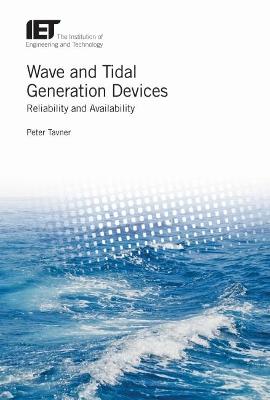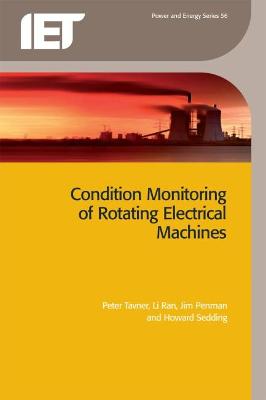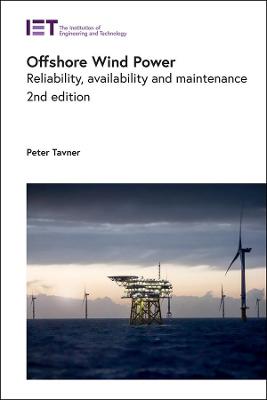Energy Engineering
4 total works
There are many wave and tidal devices under development but as yet very few are actually in revenue earning production. However the engineering problems are gradually being solved and there is an appetite to invest in these renewable generation technologies for harsher environments. To some extent the wave and tidal generation industry is following in the wake of the wind industry, particularly learning from the growing experience of offshore wind farm deployment. This book combines wind industry lessons with wave and tidal field knowledge to explore the main reliability and availability issues facing this growing industry.
Topics covered include an overview of wave and tidal development; resource; reliability theory relevant to wave and tidal devices; reliability prediction method for wave and tidal devices; practical wave and tidal device reliability; effects of MEC device taxonomy on reliability; availability and its effect on the cost of marine energy; wave and tidal device layout and grid connection; design and testing for wave and tidal devices; operational experience and lessons learnt; monitoring and its effect on operations and maintenance; and overall conclusions.
Wave and Tidal Generation Devices: Reliability and availability is essential reading for wave and tidal engineers and researchers and students of renewable energy.
The development of offshore wind power has become a pressing modern energy issue in which the UK is taking a major part, driven by the need to find new electrical power sources, avoiding the use of fossil fuels, in the knowledge of the extensive wind resource available around our islands and the fact that the environmental impact of offshore wind farms is likely to be low.
However, there are major problems to solve if offshore wind power is to be realised and these problems revolve around the need to capture energy at a cost per kWh which is competitive with other sources. This depends upon the longevity of the wind turbines which make up offshore wind farms. Their availability, reliability and the efficacy and cost-effectiveness of the maintenance needed to achieve that availability, are essential to improve offshore wind life-cycle costs and the future of this emerging industry.
This book intends to address these issues head-on and demonstrate clearly to manufacturers, developers and operators the facts and figures of wind turbine operation and maintenance in the inclement offshore environment, recommending how maintenance should be done to achieve low life-cycle costs.
Condition Monitoring of Rotating Electrical Machines
by Peter Tavner, Li Ran, Jim Penman, and Howard Sedding
Condition monitoring of engineering plant has increased in importance as engineering processes are automated and manpower is reduced. However, electrical machinery receives attention only at infrequent intervals when plant is shut down and the application of protective relays to machines has also reduced operator surveillance.
A first edition of Condition Monitoring of Electrical Machines, written by Tavner and Penman, was published in 1987. The economics of industry have now changed, as a result of the privatisation and deregulation of the energy industry, placing emphasis on the importance of reliable operation of plant, throughout the whole life cycle, regardless of first cost. The availability of advanced electronics and software in powerful instrumentation, computers, and digital signal processors (DSP) has simplified our ability to instrument and analyse machinery. As a result condition monitoring is now being applied to a wider range of systems, from fault-tolerant drives of a few hundred watts in the aerospace industry, to machinery of a few hundred megawatts in major capital plant.
In this new book the original authors have been joined by Ran, an expert in power electronics and control, and Sedding, an expert in the monitoring of electrical insulation systems. Together the authors have revised and expanded the earlier book, merging their own experience with that of machine analysts to bring it up to date. The book is aimed at professional engineers in the energy, process engineering and manufacturing industries, plus research workers and students.
The development of offshore wind power has become a pressing energy issue, driven by the need to find new electrical power sources and to reduce the use of fossil fuels. Offshore wind farms can harness tremendous wind resources without annoying citizens and with a comparatively low environmental impact. They are thus becoming a central pillar of a carbon free energy system. However offshore turbines and wind farms are costly to install and maintain, making reliability and cost-effectiveness key issues. This work covers reliability of offshore wind farms as a whole, starting from weather and wind conditions, dealing with wind turbine technology, farm layout, monitoring, safety and maintenance. The thoroughly revised second edition additionally covers turbines of up to 10 MW, turbine design changes, turbine converters, HVDC converter stations and DC links, offshore sub-sea collector and export cables, and the structures supporting large offshore wind farms.
Offshore Wind Power is essential reading for scientists, engineers, technicians and advanced students interested or engaged in the design of wind turbines, drivetrain technology and power mechatronics, in academia and industry.



